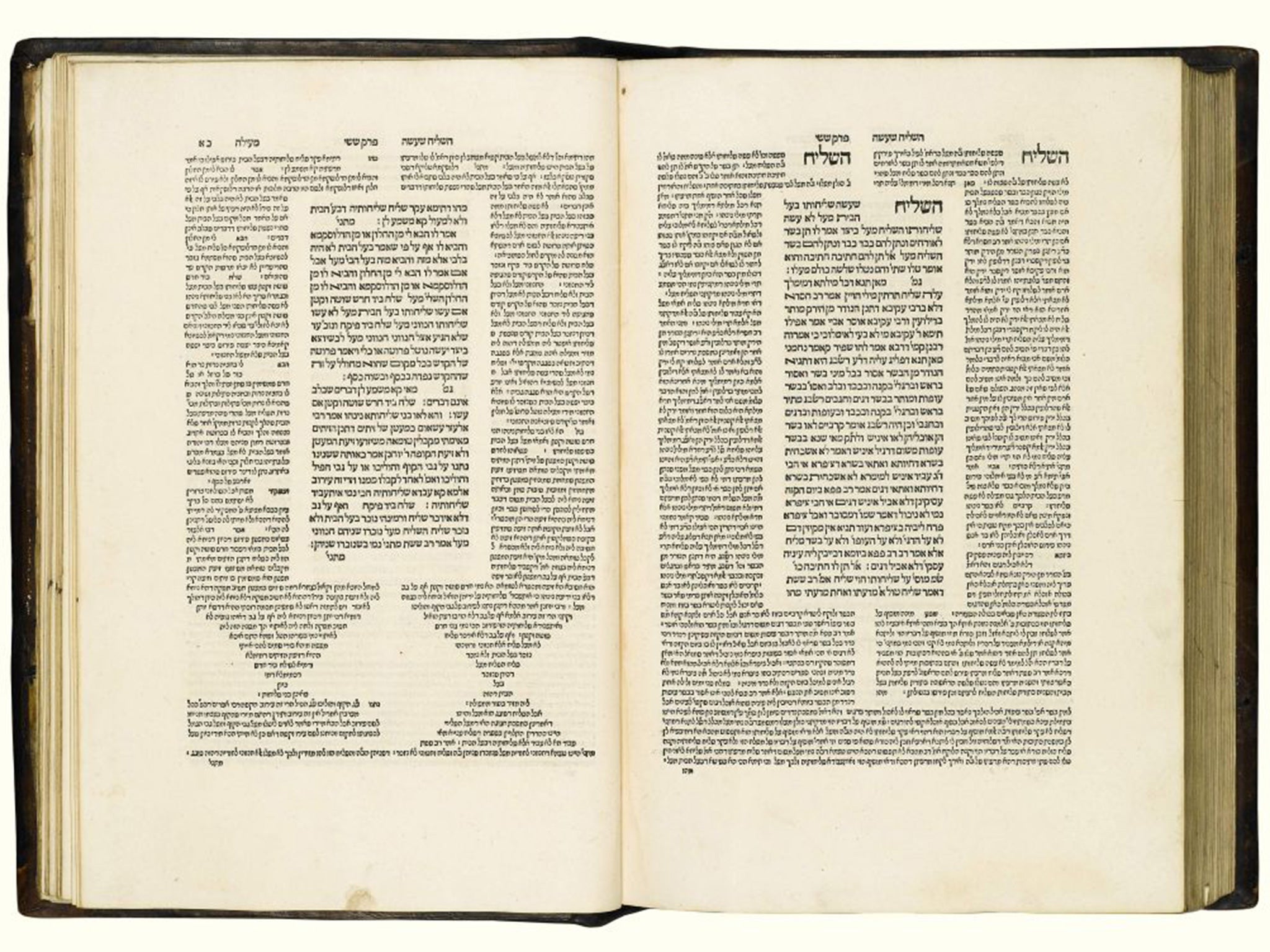Talmud: 16th-century edition of the book to be sold by diamond merchant who rescued it from obscurity
Jack Lunzer stumbled upon the copy of the world’s first complete printed edition of the Talmud after it had been misidentified and put in an exhibition of books belonging to Westminster Abbey

A 16th-century edition of one of Judaism’s most important works is to be sold by the London diamond merchant who rescued it from obscurity.
Jack Lunzer stumbled upon the copy of the world’s first complete printed edition of the Talmud after it had been misidentified and put in an exhibition of books belonging to Westminster Abbey.
After realising what the volume really was, Mr Lunzer discovered that the abbey had a complete nine-volume set of the Talmud printed by Daniel Bomberg in the 1520s, and that it had been gathering dust for centuries.
Mr Lunzer immediately realised its value. Bomberg’s first complete edition of the Talmud, printed in Venice, remains the model for all subsequent editions to the present day.
The Abbey’s near perfectly preserved Talmud, the book that forms the basis for all codes of Jewish law, was a key document in the development of Jewish faith and observance.
It took Mr Lunzer decades before he could persuade the abbey to sell it. When he finally got the book in 1980, it helped make his collection arguably the world’s finest private library of Hebrew books and manuscripts.
But with Mr Lunzer now aged 91, he and his family have decided to sell the collection, known as the Valmadonna Trust library, in a series of auctions. The Bomberg Talmud will be sold at the first auction at Sotheby’s New York on December 22 and is expected to fetch at least $7m (£4.6m).
Having always made the 13,000-item collection available to researchers, Mr Lunzer had hoped it could be kept together and sold to a major academic library, but he has been unable to find an academic institution able to afford the $30m price tag.
Mr Lunzer’s daughter Margaret Rothem said that to help scholars “everything has been microfiched” but she admitted that the thought of the collection being broken up was “awful” and said: “My father used to refer to these books as his brothers and sisters.”
The Antwerp-born son of a British diamond dealer, Mr Lunzer had initially begun collecting racehorses. Everything changed when one of his daughters asked him if his horses were running that day. “That was it for me,” he said. “I phoned the manager and said, ‘Sell my horses.’ You cannot bring up Jewish children on racehorses.”
Instead he brought them up on books, which filled his home in Hampstead Garden Suburb, north London. “The Bomberg Talmud was in the lounge,” recalled Ms Rothem. “In the library was the holy of holies – a complete collection of Italian 16th-century printed works.”
Mr Lunzer spotted the incorrectly labelled volume of the Bomberg Talmud in an exhibition at London’s Victoria and Albert Museum in 1956, but it took him until 1980 to persuade Westminster Abbey to part with it.
Subscribe to Independent Premium to bookmark this article
Want to bookmark your favourite articles and stories to read or reference later? Start your Independent Premium subscription today.

Join our commenting forum
Join thought-provoking conversations, follow other Independent readers and see their replies